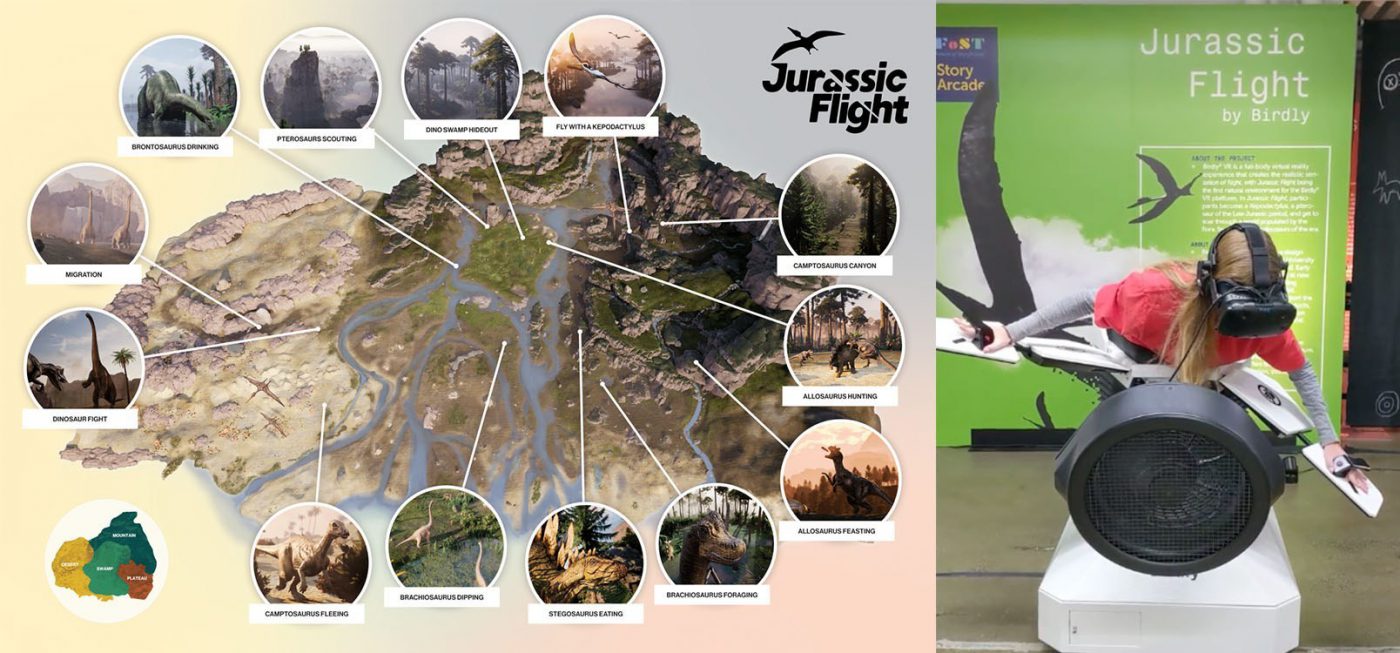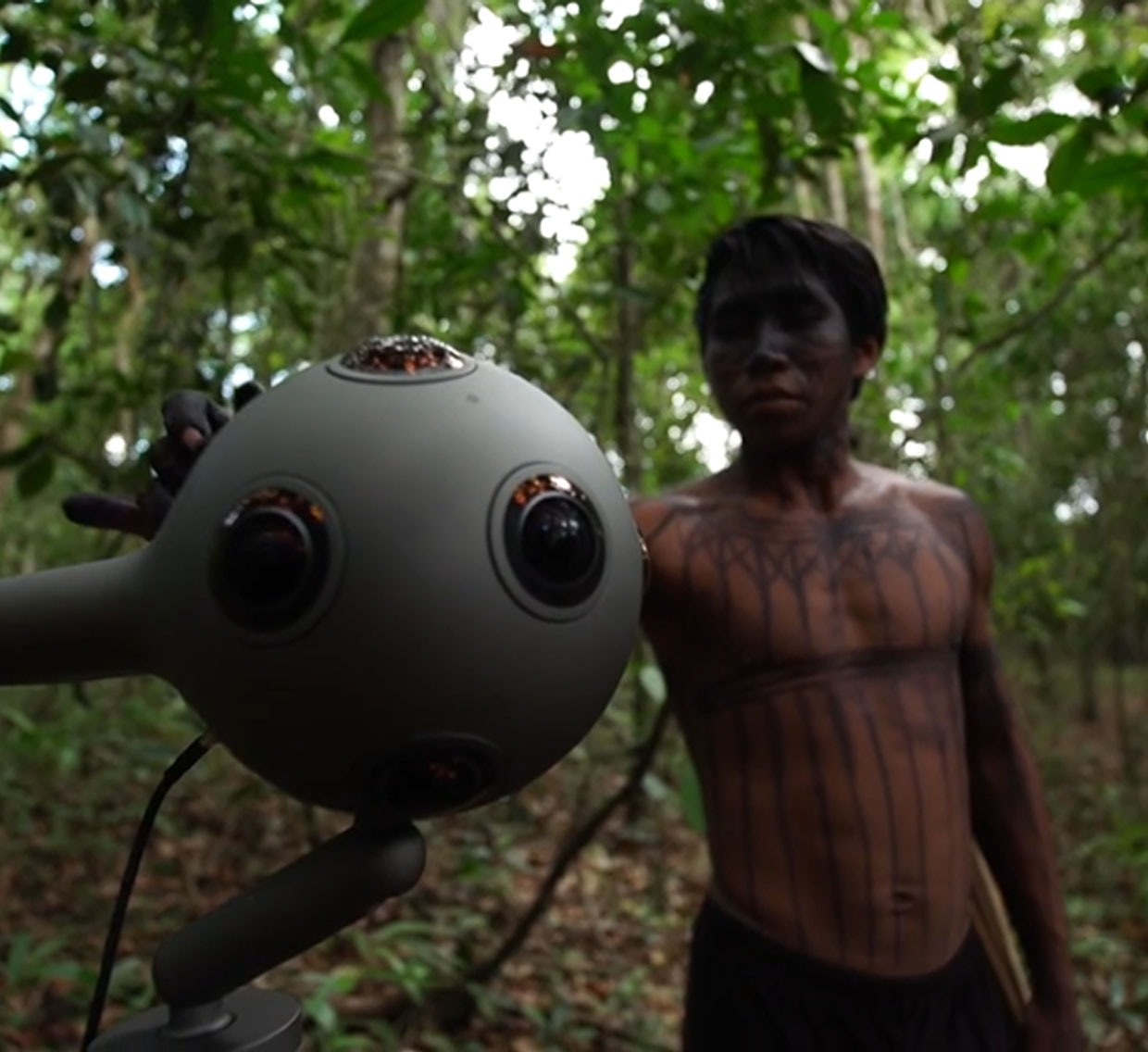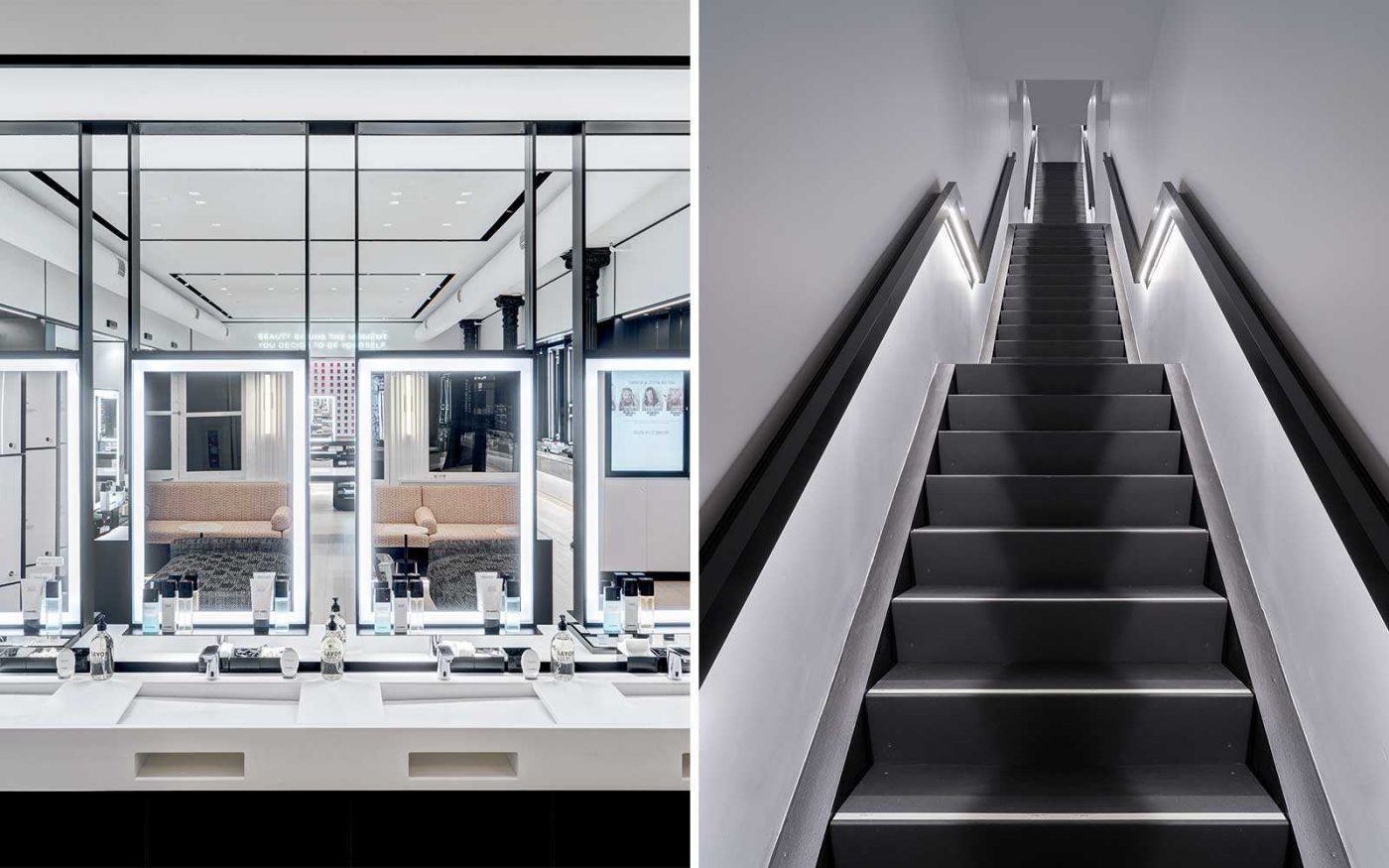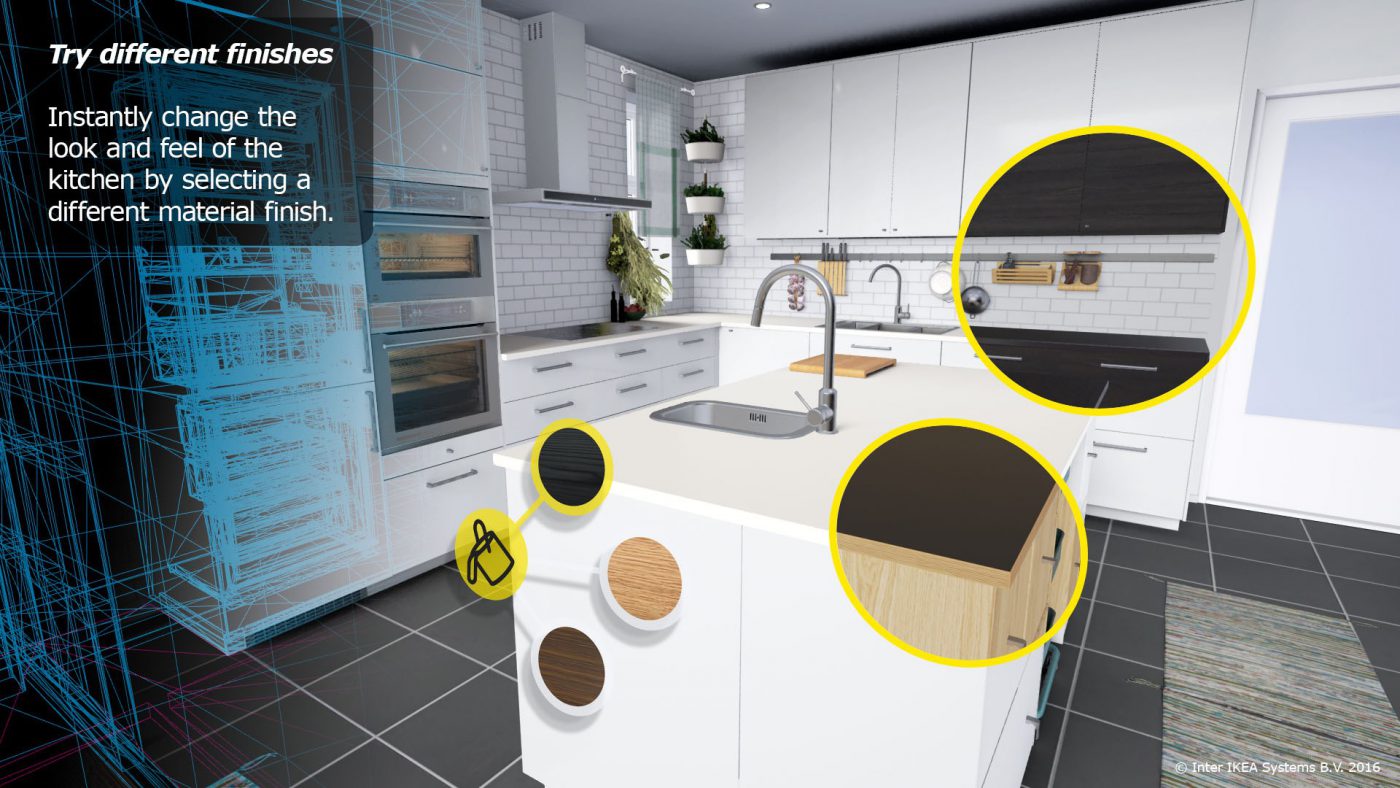France
Paris
Switch to your local agency
Retour au menu
TECHNOLOGY FOR BRANDED EXPERIENCES: FRIEND OR FOE?
In an ideal world, a brand has a story to tell. As strategists, we explore the means to tell those stories and seek to integrate exciting new ways to make them come to life. There has been an influx of tools and toys like VR, AR and even AI that brands can use. But, do those tools shape storytelling? Do they tell stories in a different way? What makes a tech-enhanced story… well, still a story? Beginning, middle and end? Protagonist versus antagonist? A heart-wrenching climax followed by a bittersweet resolution? Someone to root for? Where has storytelling been? And where will it go?
These are the questions we asked ourselves at the end of our visit to the Future of Storytelling’s pop-up, the Story Arcade.
A TRIP TO THE STORY ARCADE
For the month of April, Future of Storytelling hosted a pop-up experience, a Story Arcade featuring 8 exhibits with VR, AR, haptics, AI, and more. The premise promised cutting-edge technology combined with compelling storylines in order to transform audiences from passive spectators to active participants. Intrigued, we decided to pay the Story Arcade a visit.
Overall, the Story Arcade showed the far-flung boundaries of VR and tech-enhanced experiences. The impact of each experience was, however, a mixed bag. There were some exhibits that pushed our senses. “Cosmic Sleep” found us trapped under a blanket of haptic sensors that gave us a sense of the solar heat and space frost experienced by a comet.
“Jurassic Flight” gave us the ability to fly like a pteradon, pairing VR headsets with a full-body flight simulator, complete with fans to really drive home the sense of flying through a prehistoric landscape.
“Algorithmic Perfumery” demanded we fill out a lengthy quiz and in return an AI system concocted an original perfume catered to our personalities. The resulting scent was unique to us, with its own name and own recipe. Whether or not we liked the resulting scent was a different matter.



But those exhibits pushed only our senses. They delivered on little else. Take “Jurassic Flight” as an example. Did we feel the struggles or desires of a pterosaur? Would smelling the prehistoric fauna or feeling the Jurassic humidity have made us appreciate and connect with the life of these otherwise unknowable creatures? The answer is: probably not. We walked away from the exhibits feeling a bit dazzled, a bit disoriented, and a bit empty. Instead of leaving us with a vivid memory, we were left with a vague impression of VR technology.
This isn’t to say that all the exhibits left us feeling like we’d eaten empty carbs. There were some that genuinely moved us, even to the point of tears.
A standout was “Munduruku: the Fight to Defend the Heart of the Amazon.” Visitors were led into the world of an Amazonian tribe fighting against the ongoing deforestation of their home. The story became reality not because of the VR headset, nor even for the powerful scents of their ecosystem that were released in the pod.



Narrated by the chieftain of the tribe, Caique Suarez Saw Munduruku, the film showed various aspects of the tribe’s daily life. We saw where they eat and were given a hot cup to simulate an active participation. We saw how they worked together to harvest root vegetables, understood the importance of their collective mindset, and then were treated to the aroma of the Amazonian rainforest during harvest season. We were shown the importance of the Munduruku’s ecosystem to their daily lives, but also were imprinted with the responsibility these people have to protect the Amazon.
The technology of this exhibit was impressive, there is no doubt about that. Although technology was very present in this multisensory, enhanced experience, it was only a fully-immersive and transformative success because it had other qualities. It had stakes. It had something that we as audience members could invest our emotions and hopes in. It showed struggle. It showed connections. In short, it had a story.
The Story Arcade was fascinating and well worth the visit. Successful storytelling has long engaged the senses. Tools like VR, AR, haptic sensors, and more only serve to enhance a story, to bring it to life in new ways. Without a story at the core, the tools are just entertaining gadgets that are quickly forgotten.
EXPERENTIAL MARKETING RULES EVERYTHING AROUND ME
This is exactly what we want to avoid in branded experiences. Experiential marketing has quickly become the norm when it comes to consumer engagement efforts. The goal is always the same: how can we get consumers to remember our brand?
At the Atelier Beauté Chanel, the story is lived, not told. When it comes to storytelling, Chanel has quite the mythical history to tap into, but it chose to anchor its experience in a very real present dimension: a showroom for consumers to try on all Chanel skincare and makeup products. Technology occupies a central role in this journey, although it assists rather than instructs. Upon entering the showroom, consumers sign in on their mobile browser, and as they stroll through the different stations (Cleansing, Primer, etc), they can find each product on their phone, “like/dislike” them, as well as seamlessly add them to a shopping cart. The web page also acts as a guide with detailed notes on every station. As a result, the technology does not overwhelm the brand’s unique vision. Rather, it facilitates storytelling by bridging the brand’s imagination with its real-life products.

When the brand can build a whole showroom and design an immersive experience with multiple touchpoints, the result is most likely going to be successful. But personal VR headsets provide brands with the opportunity to engage with consumers from the comfort of their own home while still providing a branded experience. Ikea’s VR Kitchen Experience, available on the Steam store, lets users fantasize about endless possibilities for a kitchen’s design and layout, allowing them to test all basic kitchen features. It’s a virtual playground for adults with dreams of the perfect kitchen. The story told here is one of convenience, accessibility, and putting the human back into home furnishing solutions. This is the core narrative for IKEA, but translated for the in-home experience using VR as a tool, not a gimmick.

More than a glimpse into the brand universe itself, both the Chanel Atelier Beauté and the Ikea VR Kitchen let the consumer see their own personal world and daily routine, whether it’s beauty habits or kitchen renovation dreams, through the brand’s perspective. These brands encourage consumers to play, to explore, and to find new depths in the story of Chanel and IKEA. When exiting the Atelier or putting down the VR headset, what remains is an enticing, extraordinary reality that feels like it stepped out of the brand’s imagination. What makes all of these examples work is that they’re brand-centric, not tool-centric. In any best-in-show example, the decision to utilize new tools like VR is not made at the expense of the brand story and the experience does not become overshadowed by the flashiness of new tech. New experience for the sake of experience is not brand building, nor does it engender emotional equity.
THE TAKEAWAY
A consumer’s experience with a brand should reach them emotionally so as to leave a long lasting impression. The quickest and most impactful way to do that is through a strong brand story. As Brian Cornell, chief executive of Target, said, “At Target, we’re spending a lot of time exploring everything from AI to VR. But we’re also realizing there’s still no substitute for that human connection.” That human connection is what the best brand stories seek to form.
Even the simplest of enhancements generates immeasurable returns if the brand story is at the core. Technology can be great to magnify the senses, but it can’t fulfill the emotional task of storytelling. When brands properly leverage technology to take their brand to the next level, they are in fact no longer storytelling, but story building, creating a multilayered world that is sure to attract loyal consumers for a long time to come.
Privacy Overview
| Cookie | Duration | Description |
|---|---|---|
| aka_debug | This cookie is set by the provider Vimeo.This cookie is essential for the website to play video functionality. The cookie collects statistical information like how many times the video is displayed and what settings are used for playback. | |
| pll_language | 1 year | This cookie is set by Polylang plugin for WordPress powered websites. The cookie stores the language code of the last browsed page. |
| Cookie | Duration | Description |
|---|---|---|
| _gat | 1 minute | This cookies is installed by Google Universal Analytics to throttle the request rate to limit the colllection of data on high traffic sites. |
| YSC | session | This cookies is set by Youtube and is used to track the views of embedded videos. |
| Cookie | Duration | Description |
|---|---|---|
| _ga | 2 years | This cookie is installed by Google Analytics. The cookie is used to calculate visitor, session, campaign data and keep track of site usage for the site's analytics report. The cookies store information anonymously and assign a randomly generated number to identify unique visitors. |
| _gid | 1 day | This cookie is installed by Google Analytics. The cookie is used to store information of how visitors use a website and helps in creating an analytics report of how the website is doing. The data collected including the number visitors, the source where they have come from, and the pages visted in an anonymous form. |
| vuid | 2 years | This domain of this cookie is owned by Vimeo. This cookie is used by vimeo to collect tracking information. It sets a unique ID to embed videos to the website. |
| Cookie | Duration | Description |
|---|---|---|
| IDE | 1 year 24 days | Used by Google DoubleClick and stores information about how the user uses the website and any other advertisement before visiting the website. This is used to present users with ads that are relevant to them according to the user profile. |
| test_cookie | 15 minutes | This cookie is set by doubleclick.net. The purpose of the cookie is to determine if the user's browser supports cookies. |
| VISITOR_INFO1_LIVE | 5 months 27 days | This cookie is set by Youtube. Used to track the information of the embedded YouTube videos on a website. |
| Cookie | Duration | Description |
|---|---|---|
| CONSENT | 16 years 7 months 21 days 10 hours | No description |
| cookielawinfo-checkbox-functional | 1 year | The cookie is set by GDPR cookie consent to record the user consent for the cookies in the category "Functional". |
| cookielawinfo-checkbox-others | 1 year | No description |